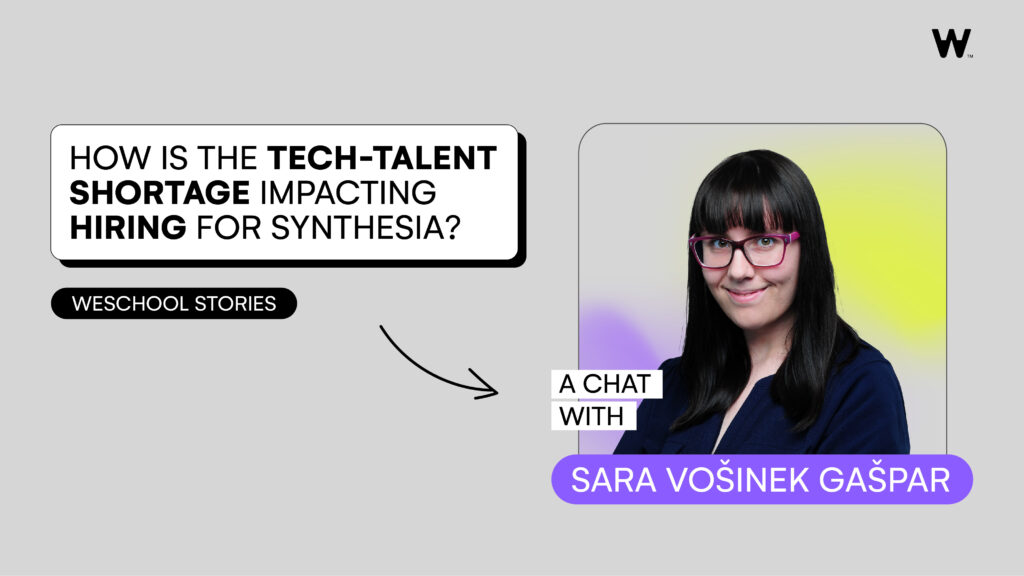Despite tech layoffs and AI dooming over world job security, the reality of many tech-companies is that hiring is harder than ever. Job postings for fields related to tech trends grew by 400,000 between 2021 and 2022, with generative AI growing the fastest at a 29% rate. In fact, ever since 2020, 44% of high-profile organizations have expected the talent shortage to become even more dire in the next five years.
What needs to change to flip this narrative?
We interviewed Sara Vosinek Gaspar, a seasoned talent acquisition specialist at Synthesia, who provides valuable insights on how tech startups can build exceptional engineering teams no matter the market conditions. With her experience in in-house and agency recruitment, she has successfully scaled Synthesia’s engineering team from 8 to over 35 members.
Sara strongly believes that our ‘tech-talent shortage’ is not a result of a lack of skills, but a lack of understanding of what skills are needed, what motivates tech profiles and how best to uncover skills in the hiring process. While this may be frustrating for recruiters “having no luck” building their teams, it is an empowering point of view that only leaves room for improvement.
Read on to learn actionable tips on how you too can attract and retain tech talent no matter the market’s climate.
While perks like remote work and flexible hours are attractive, understanding what motivates engineers and creating a work environment tailored to their needs is key. What motivates the people I want to work with? What benefits are important to them that we don’t currently offer? For example, avoiding micromanagement and unnecessary scrum ceremonies can make a significant difference in engineers.
She stresses the importance of breaking down communication barriers between non-technical professionals and engineers. To bridge the communication gap between non-technical professionals and engineers, it’s essential to equip talent acquisition specialists with technical and product knowledge. What projects will this person be working on? What do those projects require? Are there any hard or soft skills that have not been considered?
Instead of spending so much time thinking about the “ideal hire”, spend more time thinking about the real-life problems and situations the person will be involved in. When recruiters possess this knowledge and understanding they can engage in more meaningful conversations with candidates, showcase a better understanding of the roles, and accurately assess candidates’ fit for the team.
It’s one thing to hire tech-roles, it’s another to hire tech-roles to fulfill true innovation. At Synthesia, Research and Development is the heart and soul.
R&D deals with everything research, such as their avatar’s voices. Meanwhile, the engineering team focuses on developing. There are no architects, which leaves for a more intentional hiring process. Their approach is to hire engineers and product professionals that are young but academically strong. Engineers that have had deep learning for example, in their university already. This way they take advantage of their fresh perspective: when someone understands a bit of theory, but doesn’t have all the stereotypes yet, they are more equipped to envision that which is possible but does not yet exist.
On the other hand, they have a strong and more senior product engineering team responsible for building the product. This is why it’s more important for these profiles to be excellent at taking ideas into actual production: those experienced developers that are great at owning projects and capable of building entire features and projects on their own.
As important as growing with the right people is, the only thing more is making the right people want to stay. To do so, Sara recommends focusing on two things: The first one is understanding that what motivates an engineer can be different to what motivates other experts at work.
Secondly, retention is about sustainable scalability. As growth is achieved, maintaining the original vision while setting processes to monitor and measure progress is just as important.
